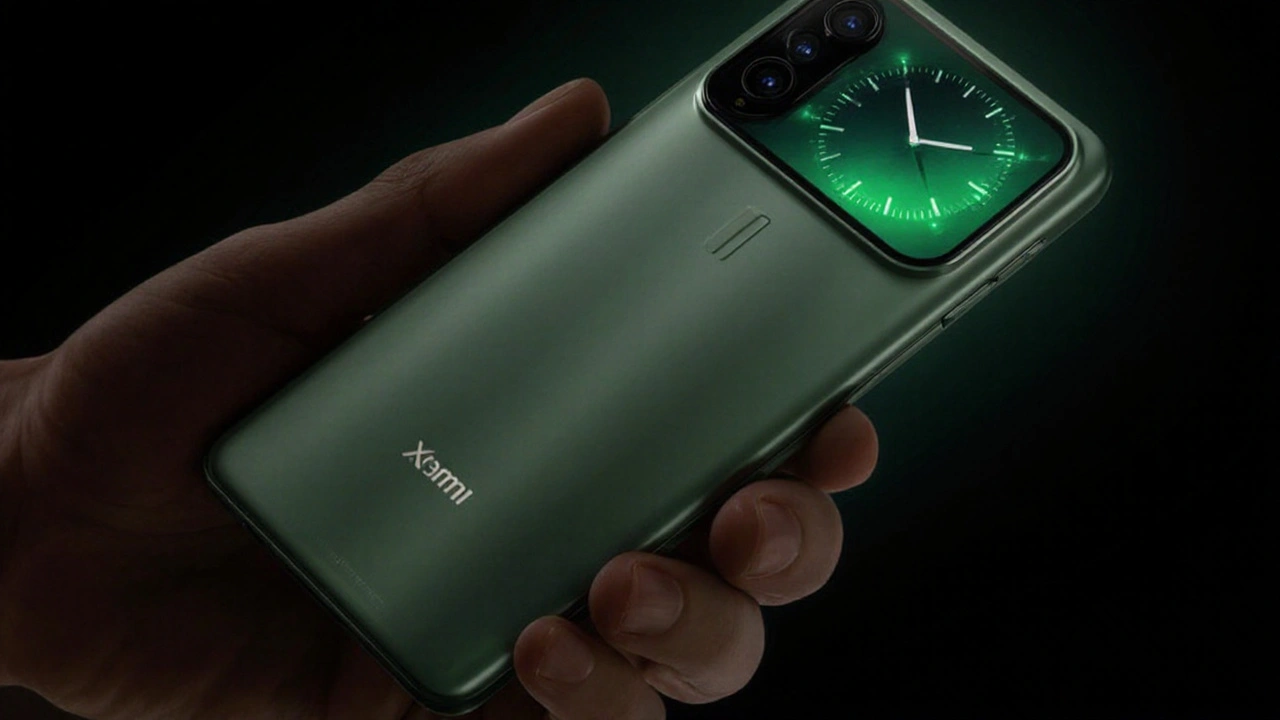Design and display innovations
When Xiaomi threw its launch party on a Thursday evening, the buzz was all about how the new handsets look and feel. The Xiaomi 17 series sticks to a clean 6.3‑inch flat OLED panel, but what’s different is the ultra‑thin 1.18 mm bezel and a 19.6:9 screen ratio that keeps the phone pocket‑friendly. Both the base 17 and the 17 Pro share this screen, and they’re equipped with Xiaomi’s in‑house M10 luminescence tech. According to the company, M10 hits a luminous efficiency of 82.1 cd/A – a claim that puts it at the top of the current efficiency charts.
The 17 Pro Max, however, gets a little extra love. It introduces a brand‑new RGB pixel‑stack architecture that tackles a phenomenon Xiaomi calls “pixel pooling”. In plain English, this means the display can shine brighter without draining the battery as fast. The company says the new stack shaves about 26 % of power use compared to regular 2K panels, a noticeable win for heavy media users.
Beyond the front screen, the Pro models sport a quirky feature: a 2.66‑inch OLED strip on the back that wraps around two of the rear cameras. Xiaomi dubs it the “Dynamic Back Display”. Think of it as a mini‑screen for shortcuts – you can set a live wallpaper, see notifications at a glance, pin a quick note, or control music without pulling out the phone.

Power, performance and pricing
All three phones are powered by Qualcomm’s brand‑new Snapdragon 8 Elite Gen 5 chipset, making the lineup the first Android devices to ship with the processor. Early benchmarks suggest a jump in AI handling and graphics performance, which should please gamers and photo‑editors alike.
Battery tech is where Xiaomi tries to out‑do itself. The standard 17 packs a massive 7,000 mAh cell, while the 17 Pro and the Pro Max step it up to 7,500 mAh. Both sizes support 100 W wired fast charging, and the base model also offers 50 W wireless charging. The power core is the so‑called Jinshajiang battery, featuring an L‑shaped stacked layout and a high‑silicon content of 16 %. This design not only squeezes more juice into the same space but also helps keep the charge rate stable.
On the software side, Xiaomi ships its new Hyper OS 3 out of the box. It’s a lightweight skin over Android that emphasizes smooth multitasking and tighter integration with the Dynamic Back Display. Users can customize the rear screen’s shortcuts directly from the OS settings.
Pricing starts at 4,499 yuan (about $632) for the entry‑level 17. The 17 Pro goes for 4,999 yuan (roughly $700) and the top‑end 17 Pro Max commands 5,999 yuan (around $840). While the price tags are higher than most of Xiaomi’s past releases, the company is clearly aiming at the premium market, betting that the combination of cutting‑edge display tech, massive batteries and the latest Snapdragon chip will win over power users.

6 Comments
Mohamed Rafi Mohamed Ansari September 27 2025
The 100W charging is definatly a game‑changer, especially for those marathon streams.
अभिषेख भदौरिया October 4 2025
Seeing the Dynamic Back Display reminds us that technology can be both functional and poetic.
It offers a quiet convenience that doesn’t scream for attention, which feels refreshing in today’s noise‑filled ecosystem.
Such subtle innovations encourage us to reflect on how we interact with our devices in daily life.
Hope this inspires more mindful design choices across the industry.
Nathan Ryu October 11 2025
While Xiaomi proudly showcases its engineering feats, we must ask whether this relentless pursuit of specs serves the greater good.
Powerful chips and massive batteries sound impressive, yet they also perpetuate a culture of constant consumption.
The Snapdragon 8 Elite’s AI capabilities may streamline tasks, but they also deepen our reliance on opaque algorithms.
Every extra watt in a charger translates to higher demand on the grid, nudging us further from sustainability.
Moreover, the pricey premium pricing alienates a large portion of the consumer base, reinforcing socioeconomic divides.
Is the pursuit of a 7,500 mAh battery truly a societal advancement, or merely a marketing ploy?
For many users, longevity is less about raw capacity and more about software optimization and repairability.
The Dynamic Back Display, while visually striking, adds another layer of complexity that may hinder repair efforts.
Complex hardware leads to higher e‑waste, a problem we cannot afford to ignore.
We must also consider the ethical implications of sourcing rare earth materials for such high‑end devices.
Will the benefits of a brighter, more efficient screen outweigh the environmental toll of mining?
Consumers deserve transparency about the lifecycle impact of these devices.
Even as we applaud technical milestones, we should not lose sight of the bigger picture.
Innovation should be guided by responsibility, not just competition.
Let’s hope manufacturers pair performance with genuine sustainability efforts.
Otherwise, we risk turning progress into a fleeting illusion.
Atul Zalavadiya October 17 2025
The M10 luminescence tech is a refreshing twist on display engineering, offering efficiency without sacrificing vibrancy.
Its claimed 82.1 cd/A metric suggests a thoughtful balance between power and visual fidelity.
Such advancements, though subtle, can significantly extend real‑world battery life for power users.
Overall, Xiaomi’s integration feels purposeful rather than gratuitous.
Amol Rane October 24 2025
Another flagship masquerading as a “premium” release – same brand, same incremental upgrades.
Hardly a revolution, just a polished version of what we’ve already seen.
Venkatesh nayak October 31 2025
Indeed, the long‑winded moralizing is entertaining, but the device still looks slick 😏.
At the end of the day, the specs do pack a punch, and many will appreciate the extra juice.